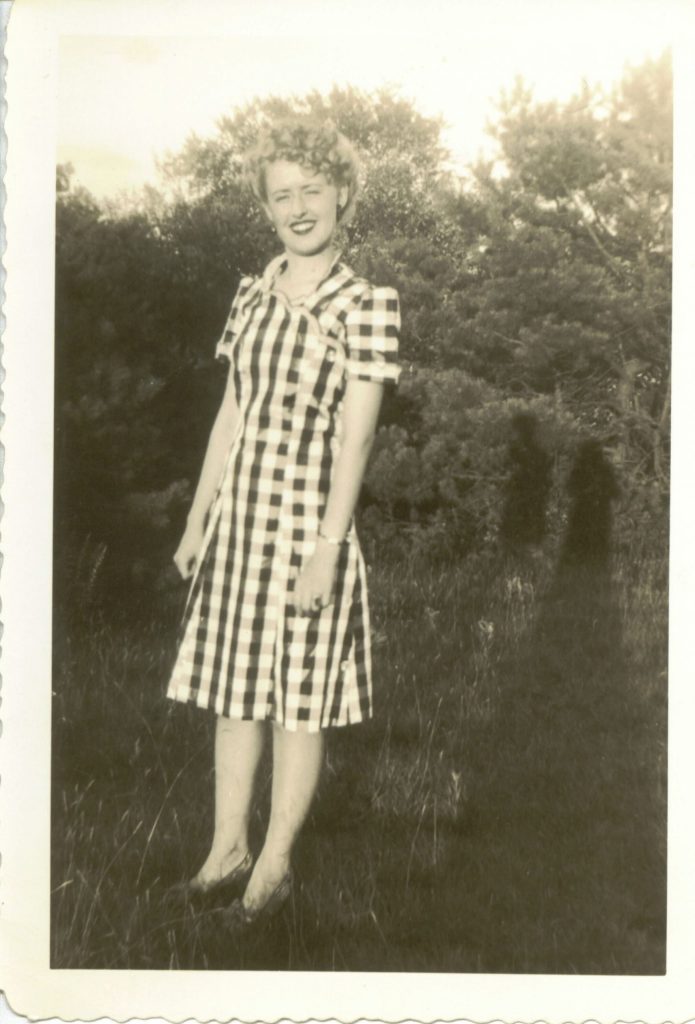I had the most awesome grandmother in the world. Sure everyone might *think* their grandmother is the best but they’d be wrong. The best grandmother lived across the street from me and her door was always open. She smoked and drank. She wasn’t afraid to laugh or cry or use a 4-letter word.
When I was old enough to drive, we’d go shopping and she’d tell me “don’t let me act like an old lady.”
Don’t pretend like you don’t know what that means. Like taking forever and a day to pay the cashier; complaining about hair color that isn’t a shade of black, brown, blonde, or red; or going to the same place and buying that same stuff. Status quo only.
My grandmother knew “acting like an old lady” was the resistance to change or anything different. Make no mistake. Acting like an old lady is not limited to females or those of advanced age.
I was always quick to chide my grandmother, “Stop acting like an old lady!”
Where am I going with this old-lady stuff? I recently read an article about California condors in the July/August 2017 issue of The Wildlife Professional.
A truly amazing conservation effort has been made to save this species.
In the early 1980s, there were as few as 21 condors in the wild (only 23 surviving worldwide). Those birds were captured to start a captive breeding program and today there are more than 220 condors in the wild. But the species is far from recovered.
The primary cause of mortality for condors, then and now, is lead poisoning. The California Condor Program tracks condors daily and screens them twice a year for lead exposure.
You read that right – they screen them twice a year for lead exposure. All birds are tagged (some are radio-transmittered) upon release or during nest checks. They are recaptured biannually to check their lead levels. (Apparently California condors are a lot easier to recapture than white-tailed deer.)
Given levels of lead exposure of these condors, survival estimates suggest that only 50% of condors will survive long enough to fledge 1 chick. Not good for the persistence of the species.
Spent lead-based ammunition remains the greatest threat to condor recovery.
The topic of lead ammunition is hotly debated by some. It is no secret that lead is toxic – to wildlife and people. Here are some facts about lead from the World Health Organization:
- Lead is a cumulative toxicant that affects multiple body systems and is particularly harmful to young children.
- Lead in the body is distributed to the brain, liver, kidney and bones. It is stored in the teeth and bones, where it accumulates over time. Human exposure is usually assessed through the measurement of lead in blood.
- Lead in bone is released into blood during pregnancy and becomes a source of exposure to the developing fetus.
- There is no known level of lead exposure that is considered safe.
- Lead poisoning is entirely preventable.
Lead ammunition was banned for waterfowl hunting in 1991 but it is still used in big and small game hunting. You’re thinking this isn’t California and I cut away the meat near the wound track in my deer.
You’re right. This isn’t California but we do have bald eagles and vultures and an array of scavengers that snack on unrecovered deer, gut piles, and other stuff shot with lead ammo.
But you aren’t right if you think that cutting around the wound track removes the lead. When lead ammo for big game and human exposure first became a topic of conversation several years ago, I was one of the naysayers. Is this really something we need to worry about? I didn’t think so.
In 2014, I attended the annual Wildlife Society Conference. It included the Brown Bag Film Festival where a conservation film was shown over lunch. I caught the film Scavenger Hunt and my eyes were opened. It chronicles the plight of the condor. But that’s not what swayed me. Chris Parish is featured in the film. He is the director for the Peregrine Fund’s Condor Project in Arizona and Utah and a lifelong hunter.
Studies have shown that lead fragments can be found in game processed for human consumption. One study found 34% of randomly chosen packages of ground venison processed by 30 different meat processors contained metal fragments. Another study found 59% of packages contained lead fragments. Lead ammunition has a higher amount of fragmentation compared to non-lead bullets.
At one point in the film, Mr. Parish is cooking dinner for his family. He doesn’t use lead ammo not just for condors but for his family. After seeing the x-rays from the carcasses and knowing what lead does to both wildlife and people, there is no question in my mind that it should never be used. And the more I read, the more convinced I am (Ingestion of Spent Lead Ammunition: implications for wildlife and humans).
So what’s the hang-up? It’s toxic to wildlife. It’s poisons people. It should be a no brainer. Why is lead ammo still out there?
Cost, availability, and performance are often cited.
Cost is a weak argument. Costs of lead-based and non-lead based bullets of comparable quality in the U.S. are similar. In 2011, deer hunters spent less than 4% of expenditures on ammunition. Even an increase in the price of ammunition by 25% would only increase ammunition expenditures to 4.8% of all the expenses of food, fuel, lodging, and other equipment.
Availability may be an issue but markets respond to demand. If there is more demand for non-lead ammo, the market will surely meet that demand.
Performance is another weak argument. Demonstrations have shown that lead ammo does not perform any better than non-lead alternatives.
Tradition is a reason not often addressed but it may be the strongest one keeping lead in our bullets. Hunters’ choice of lead ammo is the tradition they inherited. “Because we’ve always done it that way” is not a reason to do anything – let alone expose your family to a known toxin. However, it often takes a Herculean effort to get someone to change tradition.
How do you change the mind of someone with this philosophy? Many advocate for outreach and educational programs to show hunters the hazards of lead and lead ammo.
What’s my point here? New information becomes available every day. Don’t ignore it. The way you’ve always done it might not be the best and may be downright dangerous to you and your family.
Take my grandmother’s advice and don’t be an old lady!
Wildlife Biologist
If you would like to receive email alerts of new blog posts, subscribe here.
And Follow us on Twitter @WTDresearch

